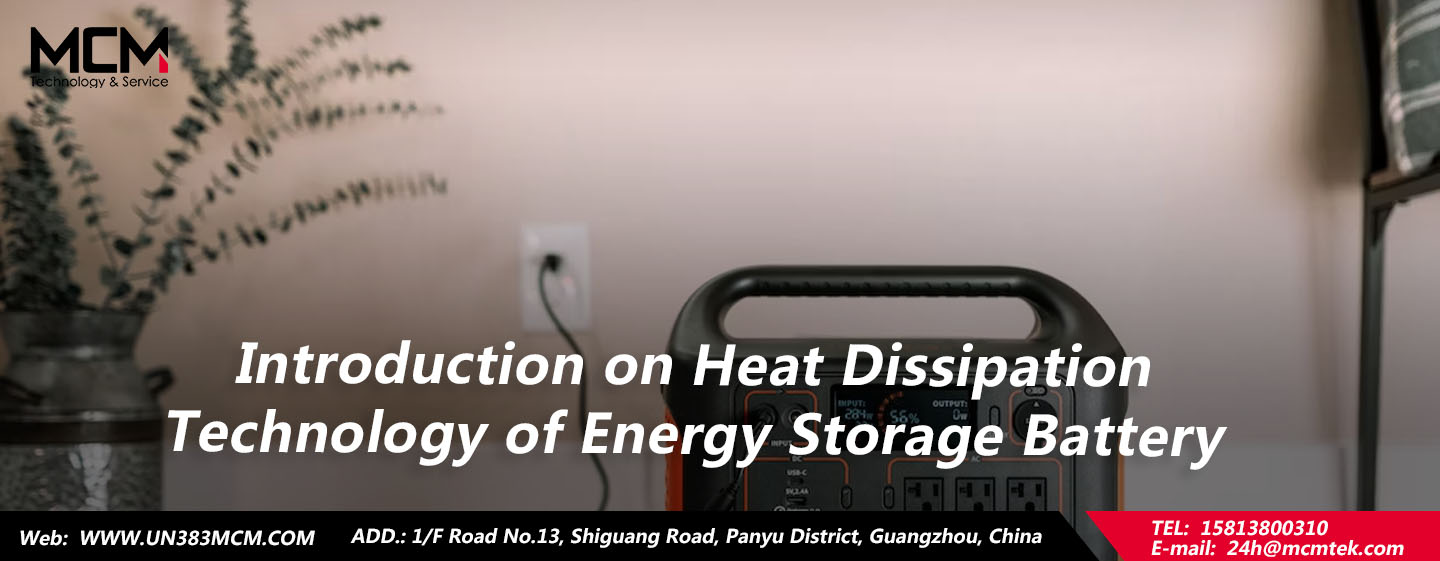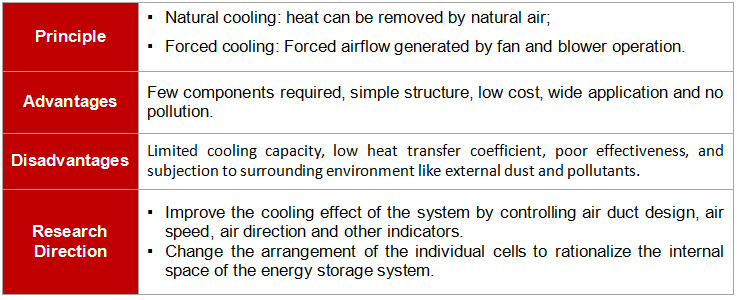Background
Battery thermal dissipation technology, also called cooling technology, is essentially a heat exchange process that reduces the internal temperature of the battery by transferring heat from the battery to the external environment through a cooling medium.it is currently used on a large scale in traction batteries, as well as energy storage batteries, especially those of container ESS. Li-ion batteries are as sensitive to temperature as chemical reaction catalysts in the actual usage. Therefore the purpose of heat dissipation is to provide an appropriate working temperature for the battery. When the temperature of Li-ion battery is too high, a series of side reactions such as decomposition of solid electrolyte interface film (SEI film) will occur inside the battery, which greatly affects the battery life cycle. However, when the temperature is too low, the performance of the battery will age faster and there exist a risk of lithium precipitation, which lead to a rapidly reduced discharging capacity and a limited performance in cold areas. What’s more, the temperature difference between the single cells in the module is also a factor that should not be ignored. Temperature difference beyond a certain range will lead to unbalanced internal charging and discharging, resulting in capacity deviation. In addition, the temperature difference will also lead to an increase in the heat generation rate of the cells near the load point, leading to battery failure.
Currently, according to the heat transfer medium, there are relative mature heat dissipation systems like air-cooling, liquid-cooling, and phase change material cooling.
Air cooling technology
Air-cooling technology is the most widely used method of battery cooling.
In some medium and high rate products, due to the high charging and discharging current, the heat inside the module cannot be dissipated quickly and effectively by natural cooling alone, as it will easily cause the heat accumulation inside and affect the cycle life of the cells. Therefore, the forced air cooling method is more suitable for the application scenario of medium and high rate energy storage products.
Liquid cooling technology
The advantage of liquid cooling technology is that the specific heat capacity and thermal conductivity of the heat transfer medium are higher, which can better solve the thermal management of the battery system than air-cooled cooling. Currently, there are two types of liquid cooling systems: direct contact and indirect contact, based on whether the coolant can directly contact the battery.
Direct contact liquid cooling system
Indirect contact liquid cooling system
Liquid cooling has a better heat dissipation effect than air cooling, and the heat exchange process is more direct, efficient and closed. However, liquid cooling requires high sealing performance of the structure and high manufacturing cost. Optimization of cooling plate material, cooling plate position, coolant selection, pipe shape, pipe arrangement form and likes can improve the heat dissipation performance. Liquid cooling technology will be the main development direction of future cooling technology of energy storage battery.
Phase change material technology
Air-cooling and liquid-cooling mainly rely on external forces to drive, while phase change material cooling is a passive way to control temperature, which is suitable for some scenarios with high requirements for heat dissipation but limited environmental space.
Conclusion
The study of battery cooling technology is a complex subject, in addition to meeting the characteristics of excellent cooling effect, compact structure, high safety and universal applicability, but also need to consider the economic requirements. In particular, the current energy storage market is booming, the container energy storage battery, compared to other batteries, has a high, dense degree of arrangement of the battery. In the confined space, it has more complex and harsh working conditions and environment, and even need to work uninterruptedly. Especially for those with the mobility of the container energy storage system, which needs to adapt to the extremely harsh external environment, and so the battery used in container energy storage system has higher adaptability requirements on the internal and external environmental. In the future we need more efficient, more stable, more economical, more compact battery cooling technology.
Post time: Apr-14-2023





